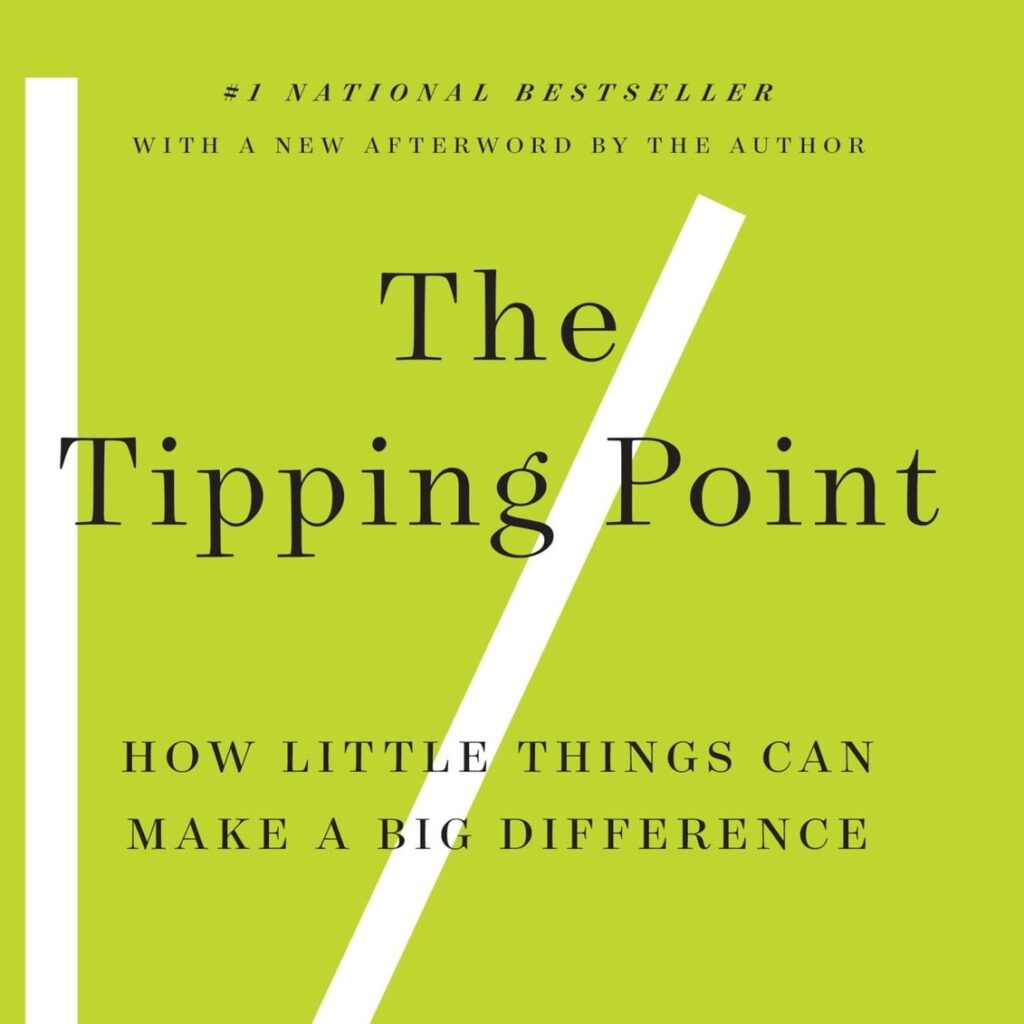Ever wonder how something goes viral? What makes something so infectious? I am not mainly referring to a disease or a virus, but more on the lines of ideas or trends. Often we hear something or somebody going viral in social media. It’s often because of a major incident or disaster, a funny video clip, or a new mind blowing idea. When Malcolm Gladwell wrote The Tipping Point, the age of influencers and the addiction to TikTok was years away. But I find a co-relation to some of his thinking that explains how people are drawn to adopt certain ideas and spread it like wildfire.
The Tipping Point is an insightful read that delves into the fascinating phenomenon of when an idea, product or movement reaches a tipping point of success. This is when an idea drives people to action, when a product reaches a point of significant success, or a movement becomes a widely adopted norm. Through his research and analysis, Malcolm Gladwell has identified three important principles that affect this phenomenon: the Law of the Few, Stickiness, and Power of Context.
The Law of the Few suggests that an idea or a product’s success relies heavily on an influential but small group of people who have access to key networks and possess the ability to spread ideas rapidly across large networks. Referred to as “Connectors”, “Mavens”, and “Salesmen”, these individuals have the charisma and power to influence others and drive people to take action. They are able to establish relationships with key influencers in a particular market, identify successful trends among consumers, and share their product information quickly. For example, Connectors tend to know multiple people from various backgrounds which makes them great at networking while Mavens tend to be well informed on specific topics and can identify successful ideas; Salesmen have charisma and are able to communicate product information in a convincing manner in order to gain customers’ trust. These are like the influencers and the thought leaders of today.
Stickiness is another principle that plays an important role in reaching the tipping point. It focuses on making sure that ideas or products are memorable, thus compelling one to take action. This requires careful analysis of consumer sentiment and demand to be driven to not just try a product, but to develop brand loyalty. Gladwell provides interesting use cases, the likes of Sesame Street and Blues Clues, to explain the rationale behind the success of these shows. Both shows take into close consideration their target audience. Determine a clear objective of what they want to achieve and how to achieve it. A key component included listening to what their target audience are looking for. One of the key use case was convincing Yale University students to take the tetanus shot. Providing very compelling reason and asking students was not as convincing for students to think about getting the shot to actually doing it. It was only when the students were provided the building location and the tetanus shot schedule that the adoption rate significantly increased. It was through a simple way to package information and with the right circumstance that an idea or a product becomes irresistible.
Lastly is Power of Context which explains how our environment effect our decisions and behaviors. This has a stronger influence than our human traits, family influence, and personal beliefs. It is through seemingly insignificant aspects or small changes in our environment (e.g., situation, context) that can have dramatic effects — for better or worse — on an idea that can mobilize an entire community to drive a movement; a start-up product to become a mainstream commodity; a virus to spread and become an epidemic. This was demonstrated in the New York Subway Graffiti Clean Up in 1984-1990 and the Broken Window Theory with the New York Police. Both endeavor drove the tipping point for the New York Subway getting cleaned and for New York crime to decline in 1990. It contradicts what psychologists say about a person’s action/behavior is driven by an intrinsic force instead of the environment.
Overall, The Tipping Point serves as an incredibly useful guidebook into understanding what causes an idea, product, or movement to reach its point of success or widespread adoption. Through his analysis and research, Malcolm Gladwell provides key principles, backed by real-life examples, that endorses the driver of the tipping point. Highly recommended read! Contact us if you have any questions.
